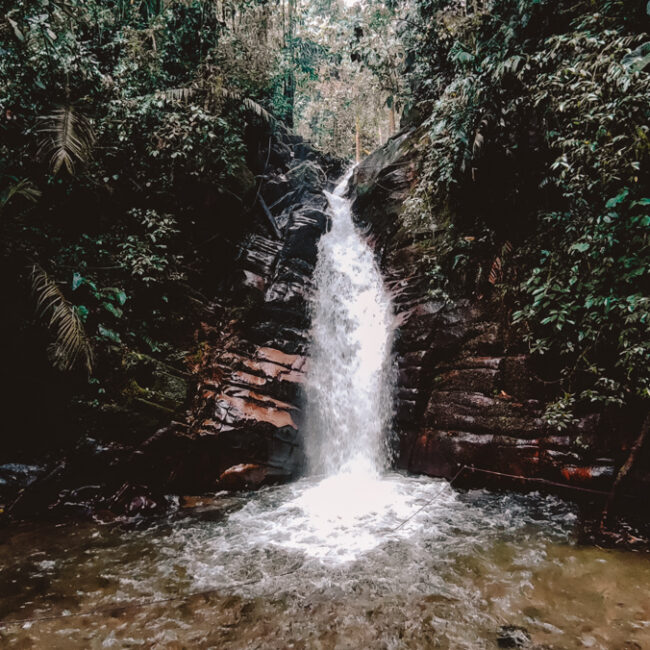

Do you plan on visiting Borneo in the near future? Then you will probably want to catch a glimpse of the endangered Proboscis monkeys. There are a few places in Borneo where you can still see them in the wild and one of these places is Bako National Park, which is located only 37 kilometers away from Kuching, the main city of Sarawak in Malaysian Borneo. Visiting this park will surely be a highlight of your trip! In this guide, I will tell you everything you need to know about Bako National Park!
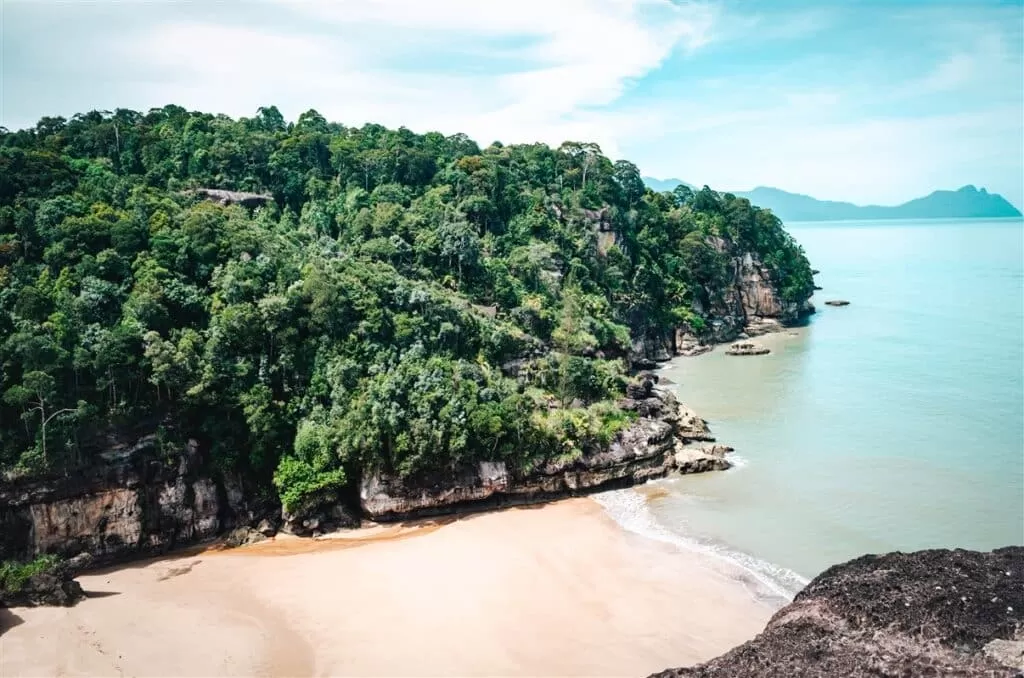
Gorgeous beaches at Bako National Park
Bako National Park is one of the smallest parks in South-East Asia. Although it is relatively small in size, it packs an abundance of attractions, including wildlife, beautiful deserted beaches, waterfalls, and almost all types of Bornean vegetation.
Most people visit Bako National Park on a day trip but they couldn’t be more wrong! To really grasp the beauty of the park, its trails and to experience some extraordinary wildlife sightings, at least an overnight stay is recommended to get the most out of your visit.
The park has some basic accommodation options, like a forest hostel, cabins, and even a few three-bedroom houses. Don’t expect any luxury, but they do have everything you need for a comfortable stay.
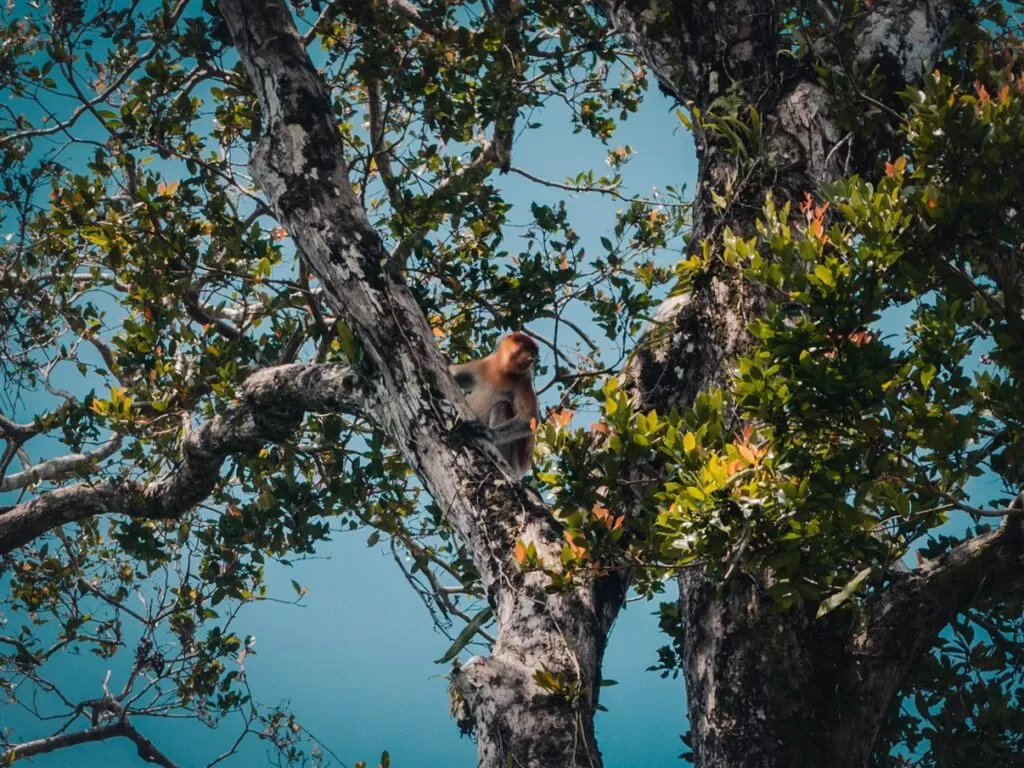
Proboscis monkey at Bako National Park
Bako National Park contains almost every type of vegetation that exists in Borneo. Aside from that, there is an abundance of wildlife in the park. While some of them can be seen during the daytime, a lot of the creatures are nocturnal and can only be seen at night.
If you want to get an idea of the different types of vegetation that exist in Borneo, then visiting Bako National Park is an excellent choice. Almost all types of vegetation can be found here which makes this park quite unique.
At Bako National Park, you can find dipterocarp forest, scrub-like padang, beach forest, delicate cliff vegetation, peat swamp forest, and mangroves. The park is also home to pitcher plants which are known to consume small insects, and in Bako, even small animals like lizards.
The main attraction of Bako National Park is of course the Proboscis monkey. These long-nosed monkeys are endemic to the island of Borneo and are mostly found in mangrove forests near the sea or rivers.
There is a good chance of seeing Proboscis monkeys in Bako National Park. However, I didn’t see them on my first day in the park so I would highly suggest staying over at least one night to increase your chances of seeing them. In the morning, they often hang around at the park’s accommodation so chances are you probably don’t even have to leave your room.
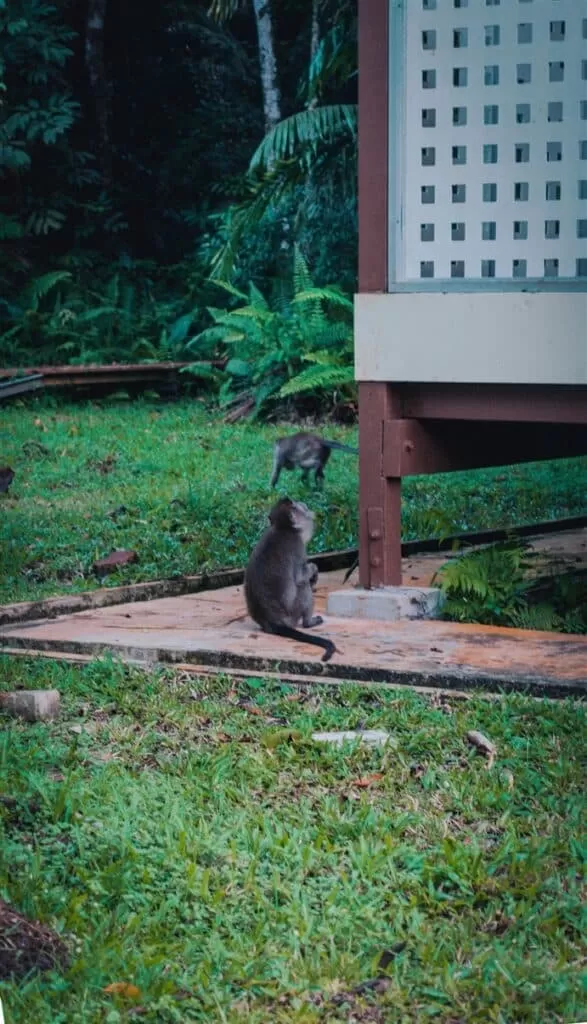
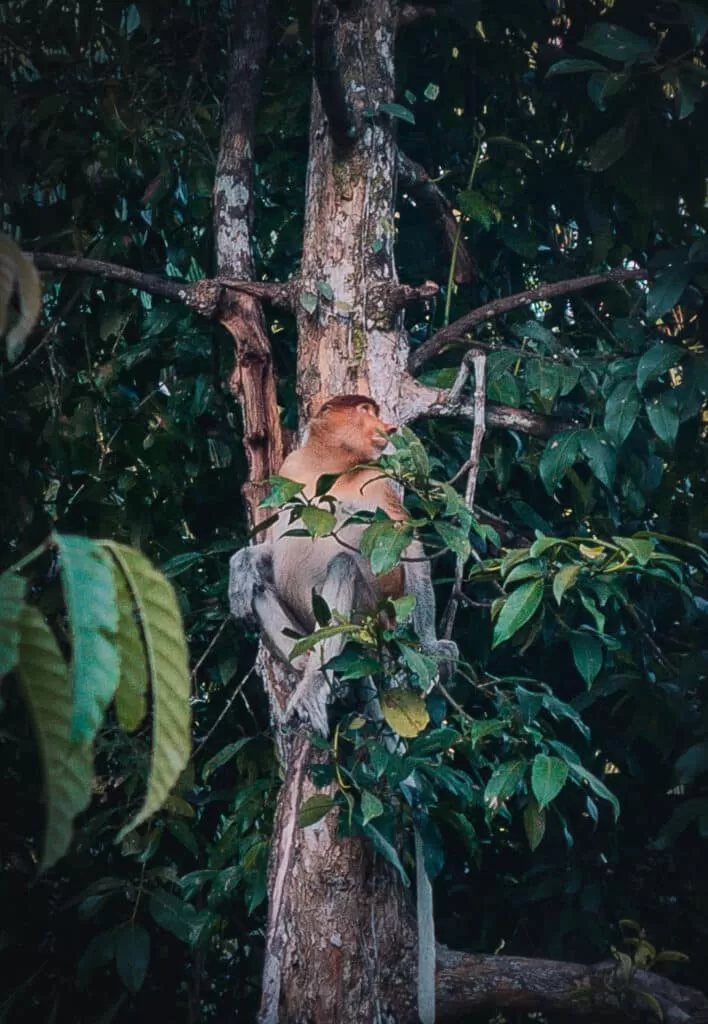
Long-tailed macaques and a Proboscis monkey
Other monkey species inside the park are the long-tailed macaques and silvered leaf monkeys. The macaques are very easy to spot since they can be quite loud. The silvered leaf monkeys are a bit harder to spot since they don’t often come very close to the park HQ.
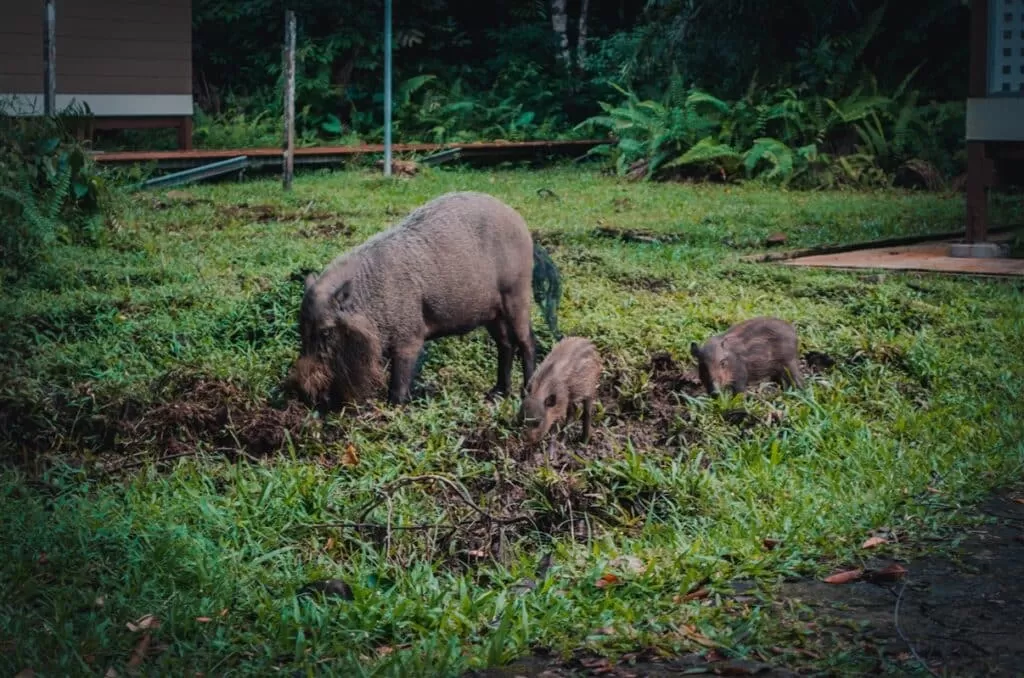
The Bornean bearded pig
Other animals that can be seen are the Bornean bearded pig, monitor lizards, snakes, and a large array of frogs and birds. There are also multiple animals that can be seen during a night walk but I’ll get into that later on in the post.
→ Also read: A complete guide to Semenggoh Nature Reserve
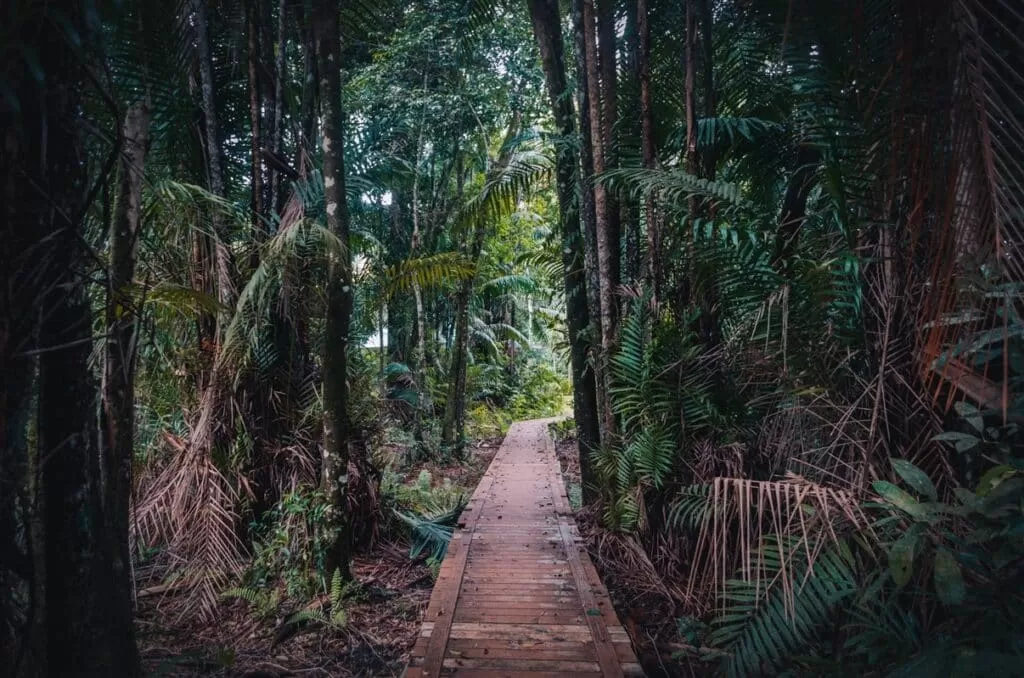
Trails in Bako National Park around the park HQ
There are numerous hiking trails in Bako National Park from which you can choose to explore the park’s natural beauty. Unfortunately, during our visit (November 2022), more than half of the trails were closed for maintenance. This left us with only a few trails to explore, but it was still absolutely worth it!
Upon arrival at the park HQ, you will be provided with a map of all the trails in the park. They are colored-coded and, once you have found them, are easy to follow.
Do note that some trails don’t start at the park HQ but are an extension of another trail, which can sometimes be confusing. For the Pandan Kecil trail, for instance, you’ll first have to walk a part of the red Lintang trail before reaching the yellow sign of the Pandan Kecil trail.
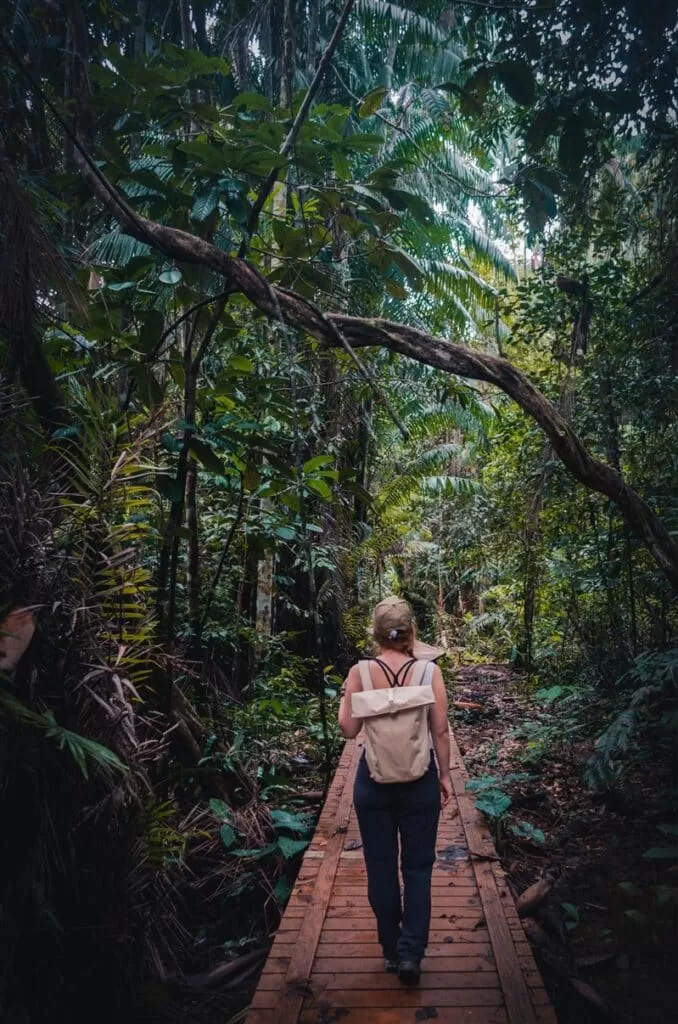
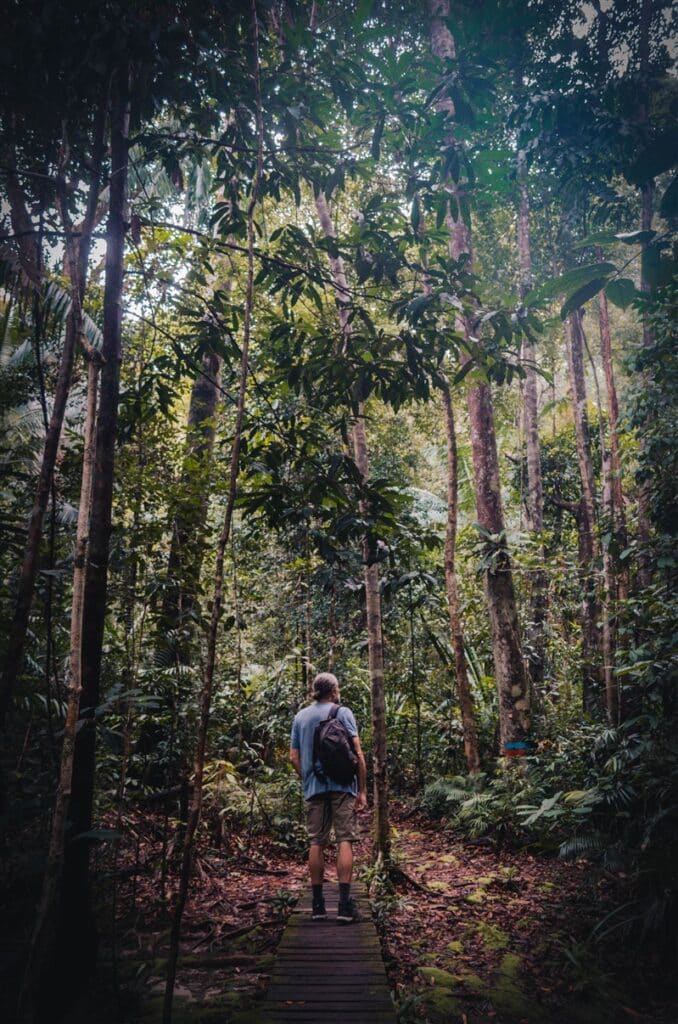
Easy walking trails around the park HQ
The trails around the park HQ are all very easy to follow. They consist of wooden boardwalks and the terrain is flat which makes them comfortable if you didn’t bring hiking boots or if you’re not in the best physical shape.
They make for pleasant walks around the hostel, cabins, houses, and the HQ and restaurant. If your health doesn’t allow strenuous hikes with a lot of climbing then Bako can still be a wonderful experience for you because all wildlife can regularly be seen from these boardwalks. The night tour also follows these trails.
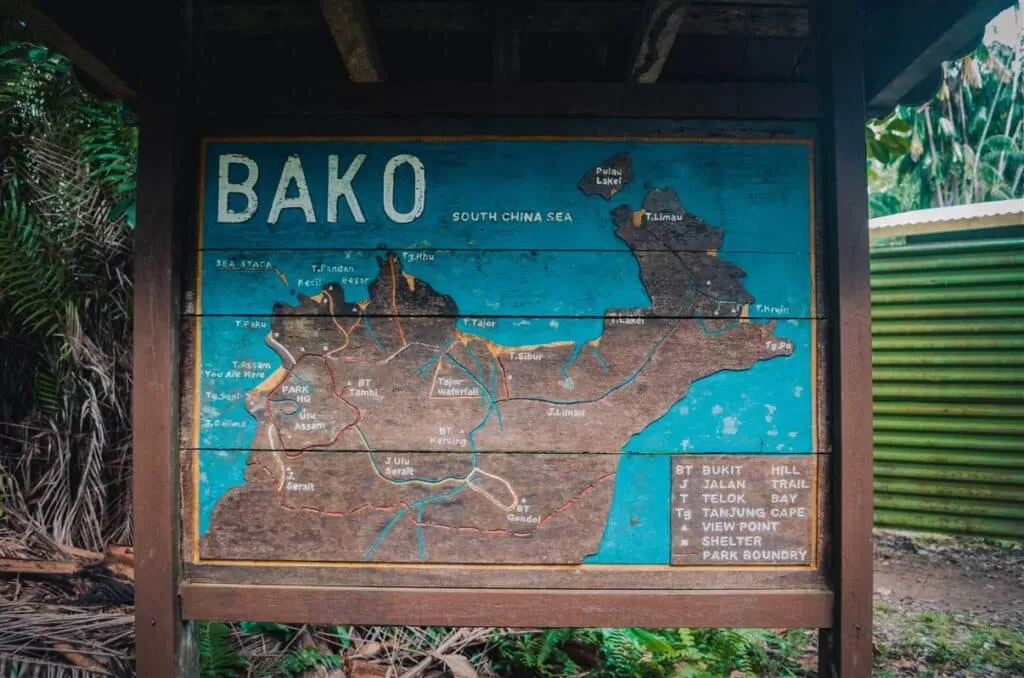
Map of the trails at Bako National Park
If you want to venture out further into Bako National Park then it will involve some uphill climbing. The other trails in the park are not man-made but follow the natural structure of the forest and will involve hiking over tree roots and rocks to reach the upper open plateau of the park.
From there, several sections of the trails consist of boardwalks again. Here are the trails in the park:
The Tanjung Sapi trail is a short trail that can be found on your left when facing the sea in front of the park HQ. It involves a steep climb but you will be rewarded with gorgeous views of the Santubong peninsula, the South Chinese Sea, and Telok Assam.
Telok Paku involves some climbing but is a great trail to take if you arrive in the late afternoon and you only have time for a short walk. It involves a short hike through cliff forest and it ends at a secluded white sand beach. There is a small wooden platform to catch your breath while you can try to catch a glimpse of Proboscis monkeys. According to the park HQ they often hang around here in the late afternoon but we didn’t see any here when we walked the trail.
After following a part of the Lintang trail first, the trail will branch off and will bring you to a beautiful viewpoint. It involves a lot of climbing and is pretty steep and we had to tackle some fallen trees when we were there.
To your left when facing the sea in front of the HQ you can find the Telok Delima trail. It climbs a hill and is indicated by the park Headquarters as prime Proboscis monkey territory.
Together with Telok Pandan Kecil, this is one of the most popular hikes in the park. It is best to combine this trip with Pandan Kecil since they are lying next to each other.
At this trail, you will first have to follow the Lintang trail to the upper plateau of the park before reaching the yellow trails to Pandan Besar and Pandan Kecil. At the end of the trail of Pandan Besar, you will reach a spectacular cliff top with wonderful views.
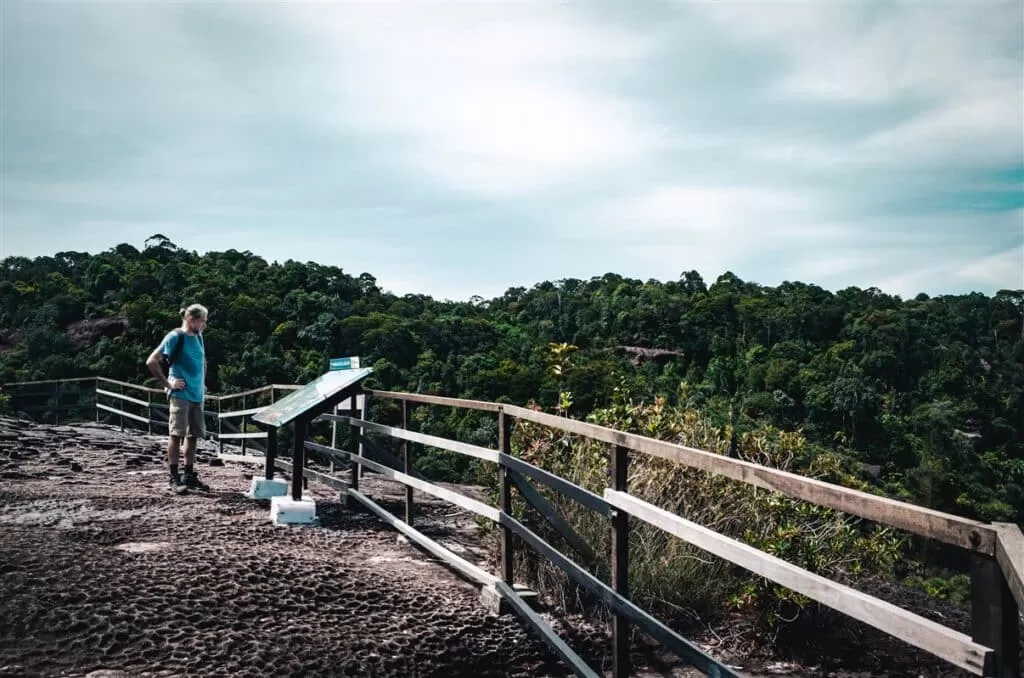
Viewpoint at the Telok Pandan Kecil trail
Telok Pandan Kecil is another trail that follows the Lintang trail first before branching of in the yellow Pandan Kecil trail. It leads you on the plateau to another beautiful cliff from which you have views over the famous “sea stack”. You can take a short walk down the cliff to a beautiful white sand beach.
The Lintang loop is the best way to explore the park if you only have one day to spend in Bako. It is a three to four-hour loop that passes through almost all the vegetation types in the park.
Aside from these trails, there are many more hikes possible in Bako National Park. Unfortunately, they were all closed for maintenance when we visited. After doing some research, it seems that they have been closed for a few years now.
The names of the other trails are: Bukit Keruing, Paya Jelutong, Bukit Gondol, Ulu Serait, Telok Sibur, Telok Limau, Telok Kruin, Pa’Amit (Lakei island).
According to the maps we got at the park HQ the trails to Tanjung Rhu and Tajor should have been open but when we arrived at the trailhead there was a sign saying that it was forbidden to continue which was quite disappointing because we wanted to visit the waterfall on the Tajor trail.
Nevertheless, the trails that are accessible are enough to keep you busy for a few days and are all equally beautiful.
Booking.com: For the best cheap guesthouses and homestays or small hotels
Hostelworld: To find the best hostels located in the cities
Homestay: For unique immersive homestays
Public transport in Sarawak is not abundant. If you want to get to some remote places you will have to turn to travel agencies or, like us, hitchhike! Here are the best resources we found online:
12GO: The best transport website for long-distance buses and flights in Sarawak.
GRAB: for taxi rides in cities and nearby attractions.
MAXIM: a slightly cheaper alternative to Grab but doesn’t drive as far outside of city centers as Grab cars.
Note that there is a local bus service that is operated by the government to Lundu and Sematan. It cannot be booked online and there is no information to be found online. It leaves from the Boulevard Mall in Kuching and only costs RM 1. Ask Grab or Maxim drivers about this local bus or ask around at the Sentral Bus Complex where the long-distance buses leave. Most Sarawakians have their own car and will not be able to help you. As far as I know, there is only one bus/per day.
There is a public bus system in Kuching but there is also little information online and most of the time it is not up to date. For the most recent routes and travel times check out the information at the bus station at the open-air market in Kuching. These buses also go to Bako National Park and Semenggoh Nature Reserve and only cost RM 1.
STICKY RICE TRAVEL: The best sustainable travel agency in Malaysian Borneo.
BORNEO ADVENTURE: another reputable travel agency organizing trips to Mulu National Park and Tanjung Datu.
KUCHING KARL FROM “SECRET SARAWAK ADVENTURES”: If you are looking for a different experience aside from the regular tours then don’t hesitate to contact Kuching Karl! He is affiliated with Woodpecker Lodge in Kuching and operates customized trips in 4×4 trucks at prices lower than the travel agencies. He is also the only tour guide that specializes in the best local food around Kuching and incorporates visits to “hidden gem restaurants” into his trips. You can get in touch with him through Woodpecker Lodge or Whatsapp him at +60199158965.
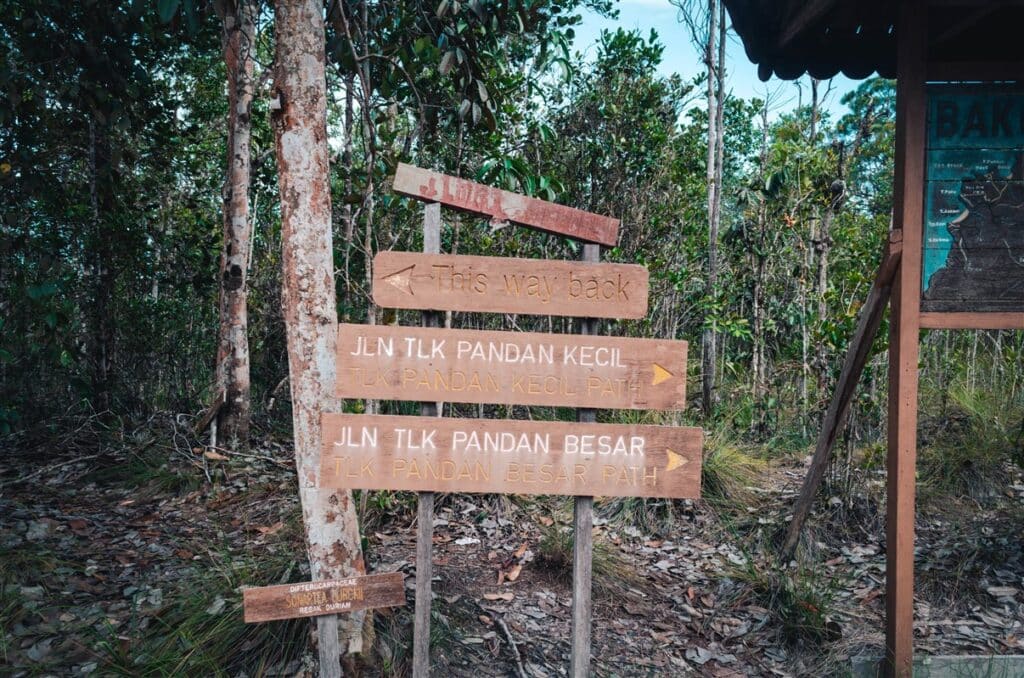
Walking in Bako National Park
The main activities in the park are of course hiking and spotting wildlife. While you can easily do this on your own in the park, there are a few organized activities from which you can choose. I can highly recommend the night tour! We saw so many animals that evening we wouldn’t have seen otherwise.
Although not advertised on the website of Bako National Park, you can rent a guide at the park’s HQ for a guided walk. I have seen a lot of people doing this, but I am not sure about the price, so it is best to inform yourself at the HQ desk how much this costs.
In addition to that, many tourists visit Bako National Park by taking an organized tour. Most tours include a pick-up at your hotel, transport, entrance fees, and a guide. you can book a day tour to Bako National Park online or consult a local travel agency in Kuching.
The HQ of the park organizes night tours every evening of the week. You don’t need to book these in advance in the low season. I am not sure what the policy is during peak season when many tourists flock to Bako National Park. If you are interested in taking the night tour, it’s a good idea to inform yourself upon arrival at the park.
The tour starts at the park HQ just after dusk and you need to register for it just before the tour leaves. It costs RM 15/ per person to participate in the tour.
During the tour, two park guides will lead you through the forest in search of nocturnal animals. Three animals to look out for are the slow loris, the flying lemur, and the mouse deer.
We were lucky to encounter many animals and insects on our trip including a flying lemur, two mouse deer, a tarantula, different frog species, bats, gigantic crickets, Huntsman spiders, two rare bird species, and walking sticks.
At the end of the night tour, you are directed to the park jetty where you can witness hundreds of fireflies in the trees.
From the park HQ you can book a boat for either a boat tour around the park or for a pick-up at a certain point along the trails if you think that hiking a trail back and forth will be too intense for you.
The “sea stack” is a famous rock formation near the coast of the Telok Pandan Kecil viewpoint. You can, however, only see it from afar from this point so if you fancy a good photo of the sea stack, it is best to go on a boat tour.
Inquire at the park HQ for prices and pick-ups. One-day tours of Bako National Park often include a boat tour around the park to the sea stack.
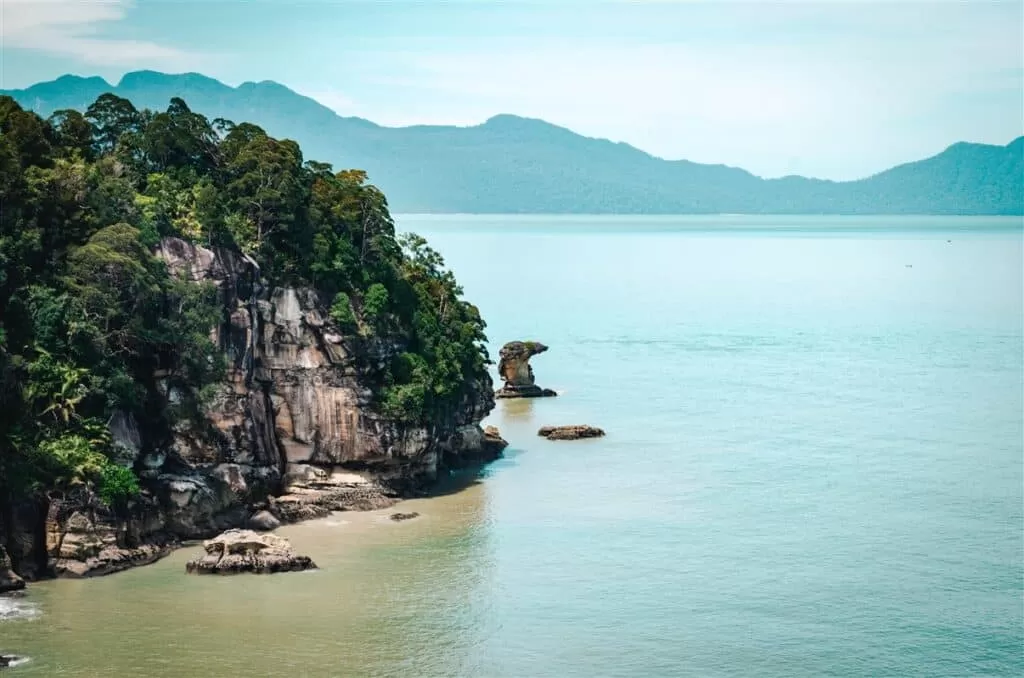
The South Chinese Sea at Bako National Park
A few years ago, swimming was still permitted at Bako National Park but, due to a few accidents with crocodiles in the waters around the park, swimming is since prohibited.
Crocodiles have always lived in the Bako river near the park but, due to the expansion of the crocodile population in the last decade, they are now sighted in areas where they previously haven’t been seen before.
As you walk around the park, you will notice the signs put up by Sarawak Forestry that indicate “not to swim”. It is, however, at your own risk if you do it or not.
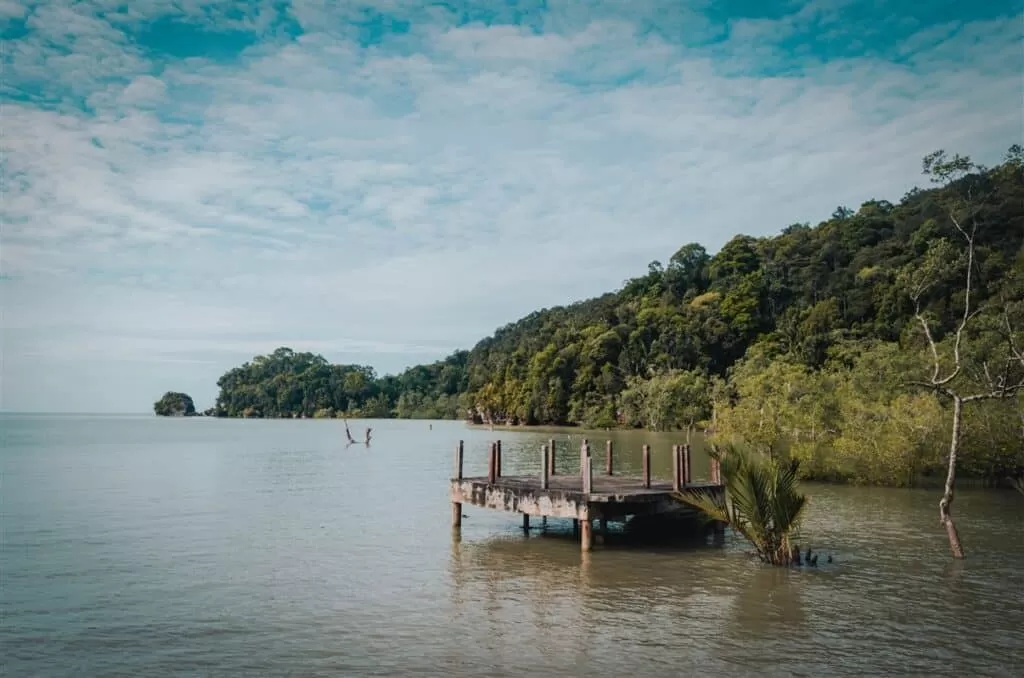
Mangrove at Bako National Park
The entrance fee of Bako National Park is RM 20 per person for foreigners and RM 10 for Malaysians. The entrance fee needs to be paid at the Bako Jetty before boarding the boat to the Park.
The boat fee for the round trip also needs to be paid for here in advance. During low season, things can get a bit tricky here. While during peak season, a boat ticket should cost no more than RM 40 or RM 50 for a round-trip, at low season, costs can get higher due to the fact that there are almost no visitors.
You can read more about this in my Kuching to Bako National Park guide.
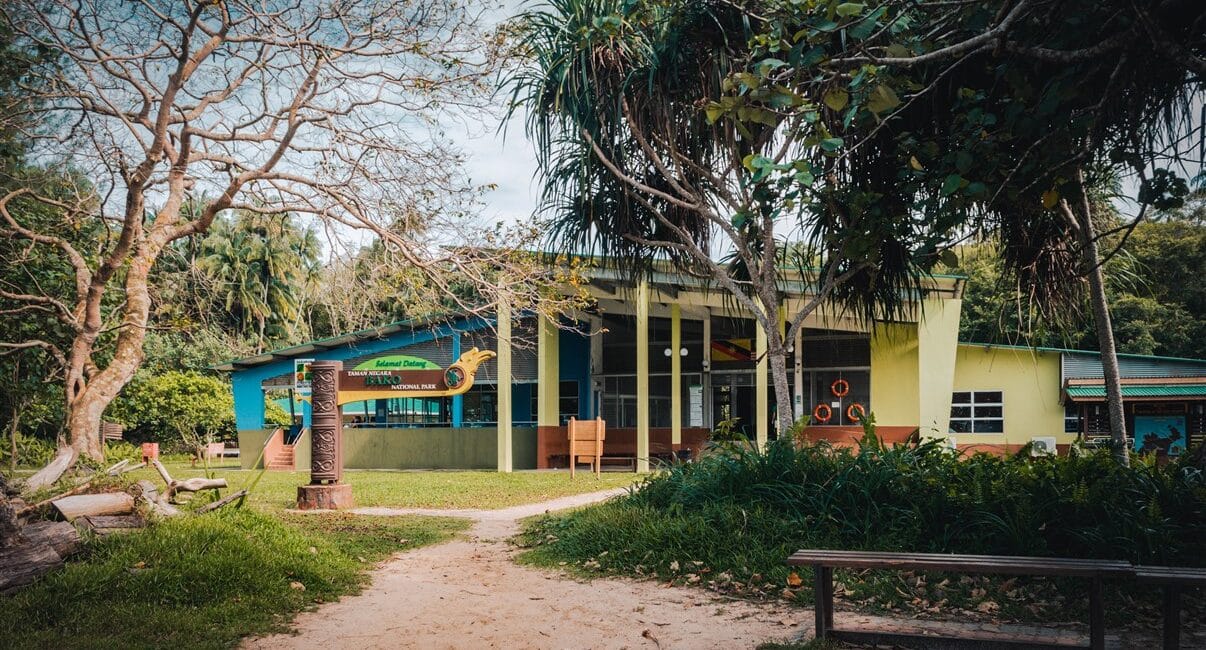
HQ and restaurant of Bako National Park
The opening hours of Bako National Park are from 8 A.M. in the morning to 5 P.M. After 5 P.M., everyone out for a hike needs to be back at the HQ headquarters. If you are staying overnight, however, it is possible to go out for an early morning hike before the day trippers are starting to arrive. You’ll have a better chance of watching wildlife than during the day.
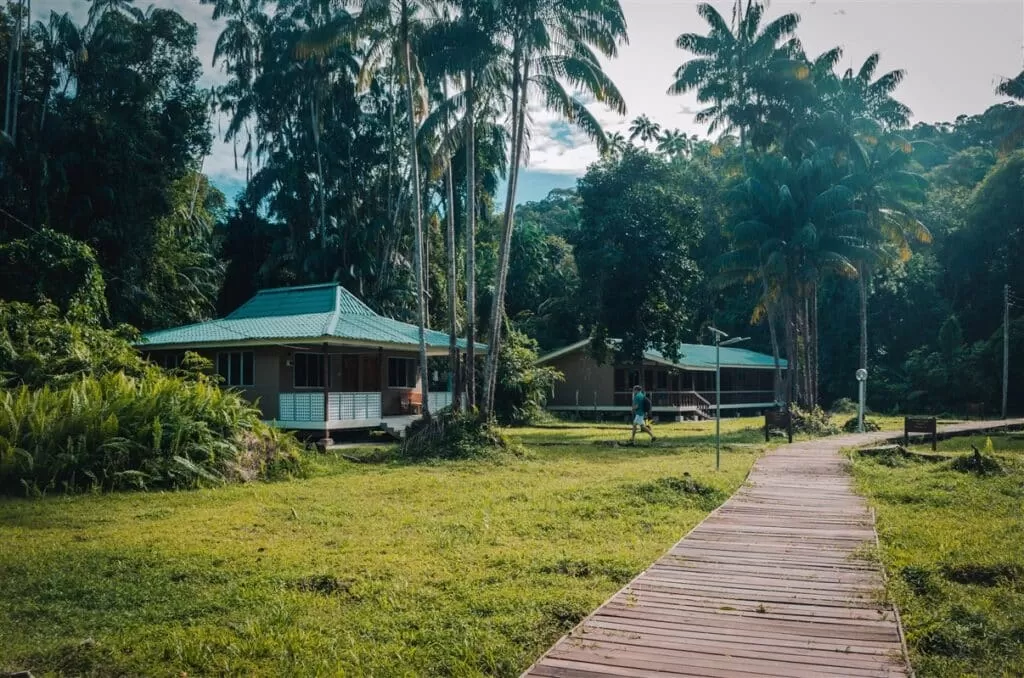
Accommodation inside Bako National Park
I stayed five nights in the park and even wanted to extend my stay an extra two days but unfortunately, the cabins I wanted to stay in were fully booked. I can’t stress enough that staying overnight in Bako National Park is one of the best decisions you can make.
There are different accommodation options in Bako National Park and I will list them below. They can all be booked through this website of the Sarawak Government.
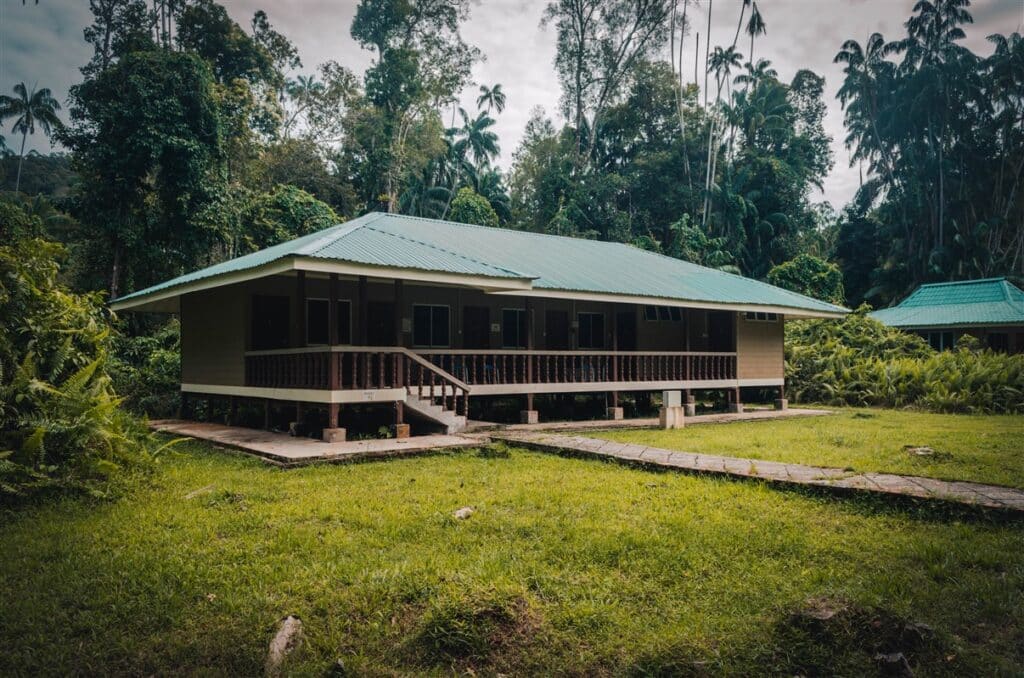
Forest hostel at Bako National Park
The forest hostel is the cheapest accommodation option in the park. It consists of two blocks of each five rooms. Each room has four beds. A single bed in a hostel room costs RM 15 while you pay RM 40 if you want to have a whole room to yourself.
Note that towels and blankets are not included in the price. At each house, there are two shared showers and two toilets. I did not stay at the hostel but I went for a quick peek to check if the bathroom and toilets were clean and they seemed well-maintained.
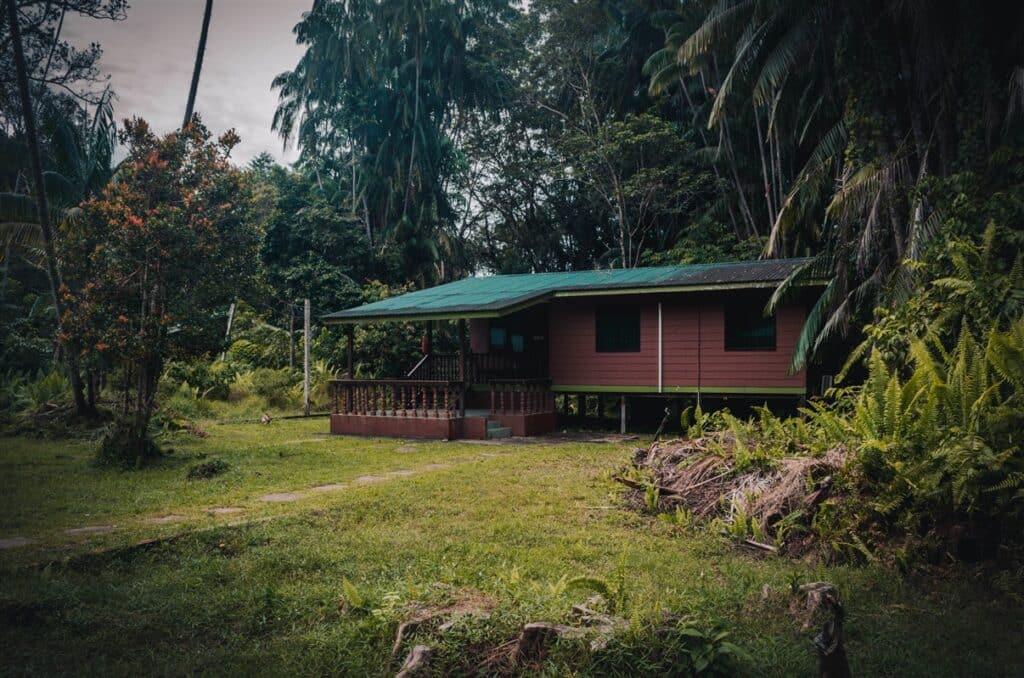
Chalet-style houses in Bako National Park
On the premises, you can find a few chalet-style cottages. They consist of two rooms with each two to four single beds and an attached toilet and bathroom. This is the best option if you travel to Bako National Park with family or a group of friends.
All the cottages are air-conditioned and have a hot shower, a refrigerator, and towels, and blankets.
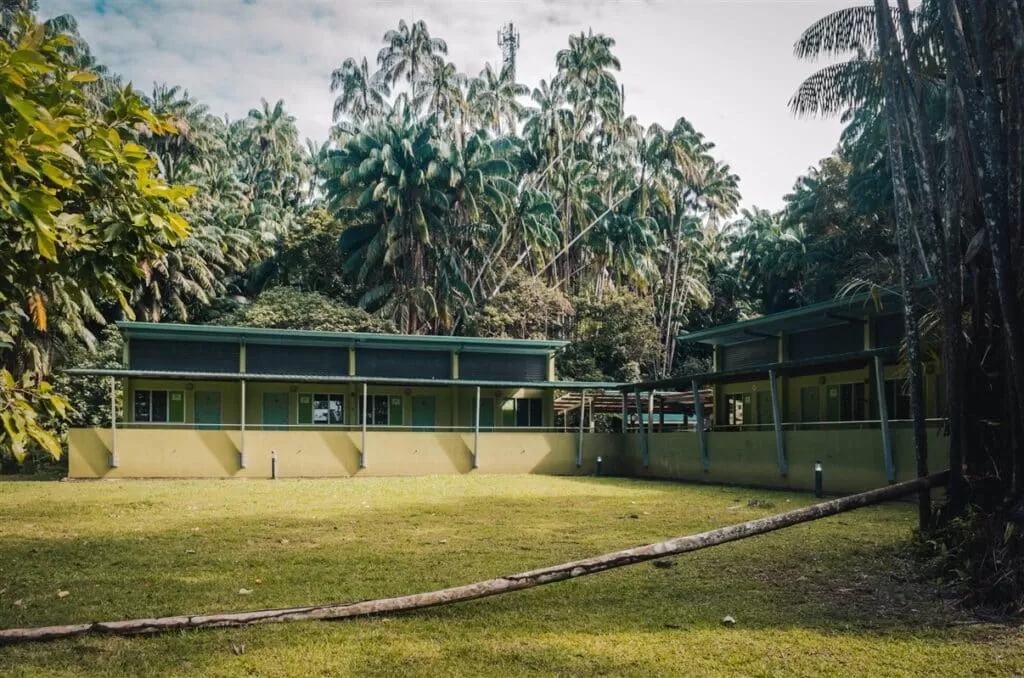
Quadruple rooms in Bako National Park
This accommodation option offers quadruple rooms with a fan, towels, blankets, and an attached bathroom and toilet. While they offer less than the cabins, they are more expensive and cost RM 100 for one room. This is a lot considering that they don’t have a fridge.
If traveling with more than two people, it is more convenient to book two types 6 cabin rooms. they have fridges, you will have more privacy and the price will be the same.
Also, the location of these rooms in the park is less idyllic than the other accommodation options.
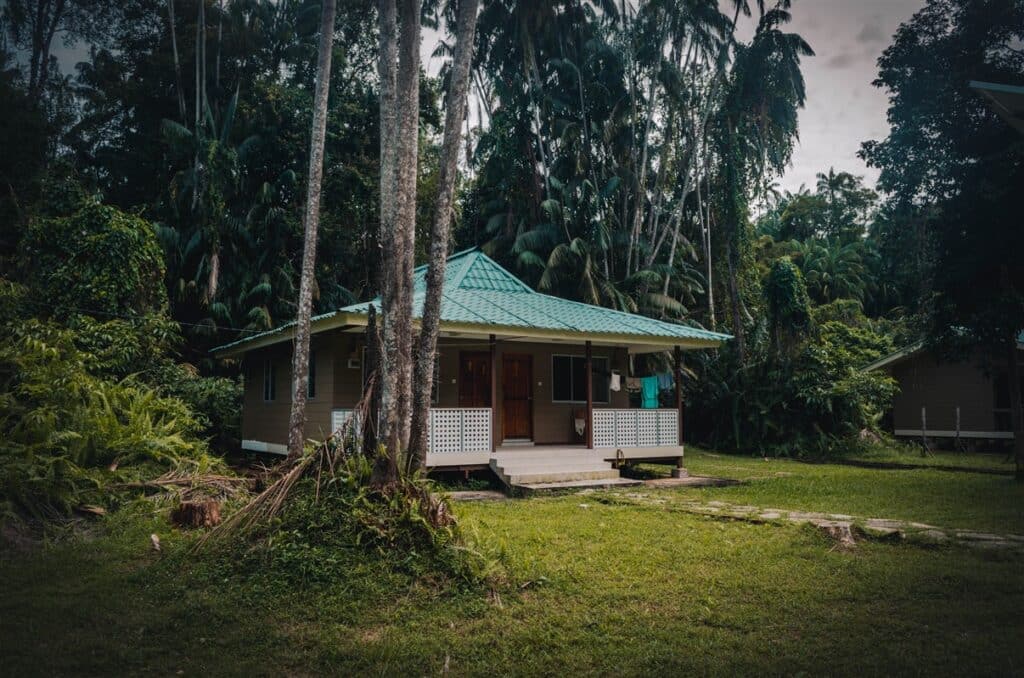
Forest twin rooms in Bako National Park
This is the accommodation I stayed in and I noticed it is also the favorite option among most travelers. These cabins consist of two rooms with each two beds and each room has an attached bathroom and toilet. The rooms are completely separate from each other so you only need to book one room if you are two people and not the whole cabin.
The rooms come with a fridge, blankets, towels, a hot shower, and a fan. A room like this costs RM 50/night.
Bako National Park also offers a campsite but I’m not sure if it’s still in use. There are stories about macaques raiding the tents for food so I believe it is better to stay in one of the other accommodation options.
Since there are no cooking facilities in Bako National Park, you are mainly dependent on the onsite cafeteria for food and drinks. There are fridges in certain accommodation types so you can stock up in Kuching on fruit, cereals, and (plant-based) milk as we did but the cafeteria offers decent enough options for breakfast, lunch and dinner.
Prices vary between RM 8 and RM 15 for a meal. On the menu, you can find typical dishes like fried rice, fried noodles, and fried kueh tiaw. They also offer breakfast dishes with eggs and hashbrowns and even beans in tomato sauce (but the latter comes from cans and is not heated).
During peak season, guests are offered a buffet but this was not the case at the time of our visit. There is a large fridge with drinks (beer, soda, water,…) at somewhat expensive prices (RM 5 for a large bottle of water). If you have tea with you or instant coffee, you can ask for hot water for a small price.
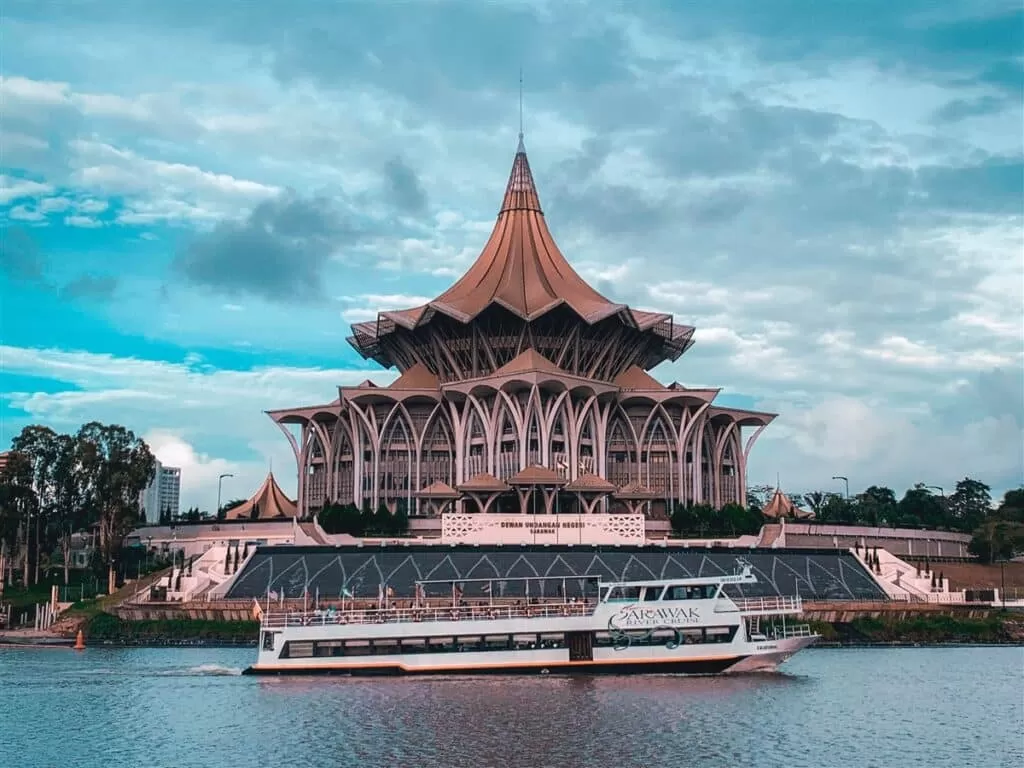
Kuching, Sarawak, Borneo
Getting to Bako National Park requires you to make your way to the Bako Jetty first and then take a 20-minute boat ride to the park HQ.
Getting from Kuching to the Bako Jetty is possible by public bus, by taxi, Grab, Maxim, shared van, or your own car if you have rented one. you can find more details about this in my guide about how to get from Kuching to Bako National Park.
The boat from the jetty at Bako village to the HQ of Bako National Park takes about 20 minutes. Depending on the tide, it will drop you off at the Jetty of the park or at the beach near the HQ.
Note that if you arrive at the beach, you will have to jump off the boat into the sea. It is best to wear shorts or a dress and sandals or flip-flops.
For this leg of the trip, you can also find more details in my guide about how to get from Kuching to Bako National Park.
As said before, there are tours going to Bako National Park. You can book a day trip to Bako National Park online or you can contact Borneo Adventure for an overnight experience in the park.
If you like to travel slowly, just like me, a one-day tour of the park is too short to really grasp the beauty of the area. I would opt to spend at least one full day in the park, which means sleeping in the park for two nights.
That way, you can go for a short hike on your date of arrival, walk the Lintang loop on the second day and go for another short hike on the third day.
If you decide that you want to stay longer than what you have initially booked, you can go to the HQ to check if your room is available for a few more nights or alternatively change rooms.
There you go! I hoped you enjoyed this guide to Bako National Park and that it has sparked your enthusiasm to visit Bako and Sarawak in general. If you have any questions, you can ask them in the comments below or drop me a message through my contact page.
If you are traveling to Bako National Park and you come to the conclusion that the information in this post isn’t accurate anymore, please let me know, so I can adjust accordingly.
ENJOY!
Disclaimer: This post may include affiliate links. If you click on them, I may receive a commission at no extra cost to you.
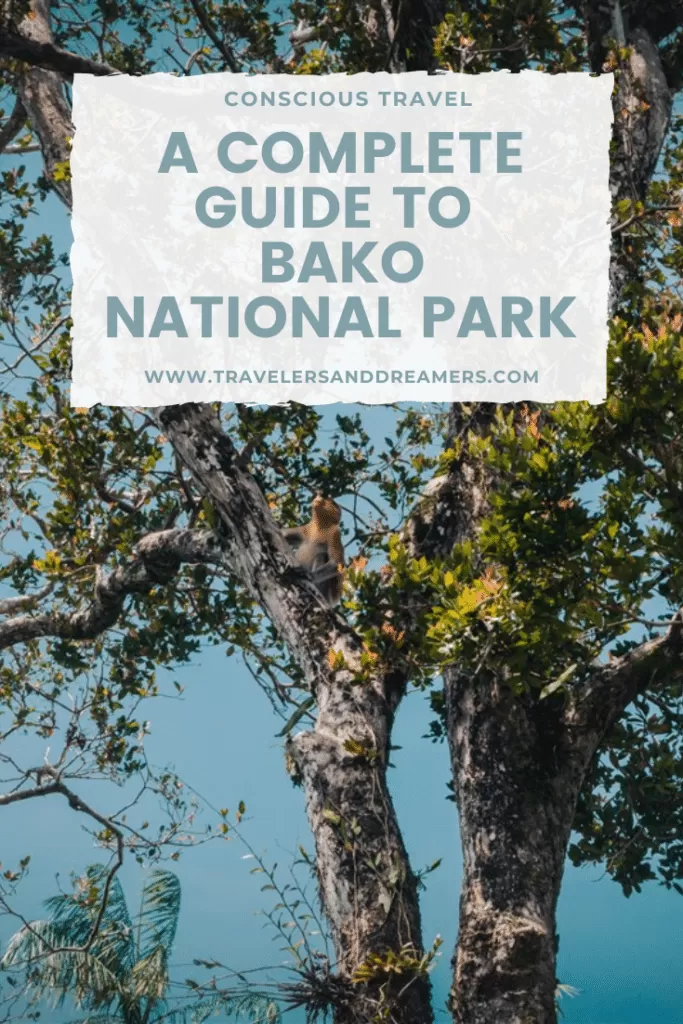
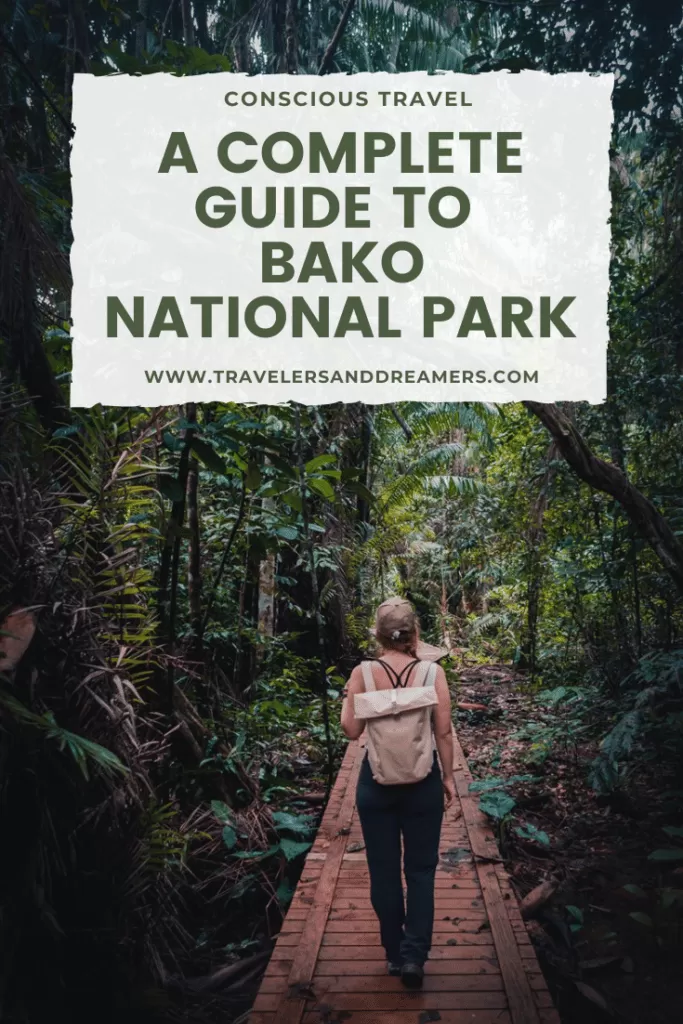
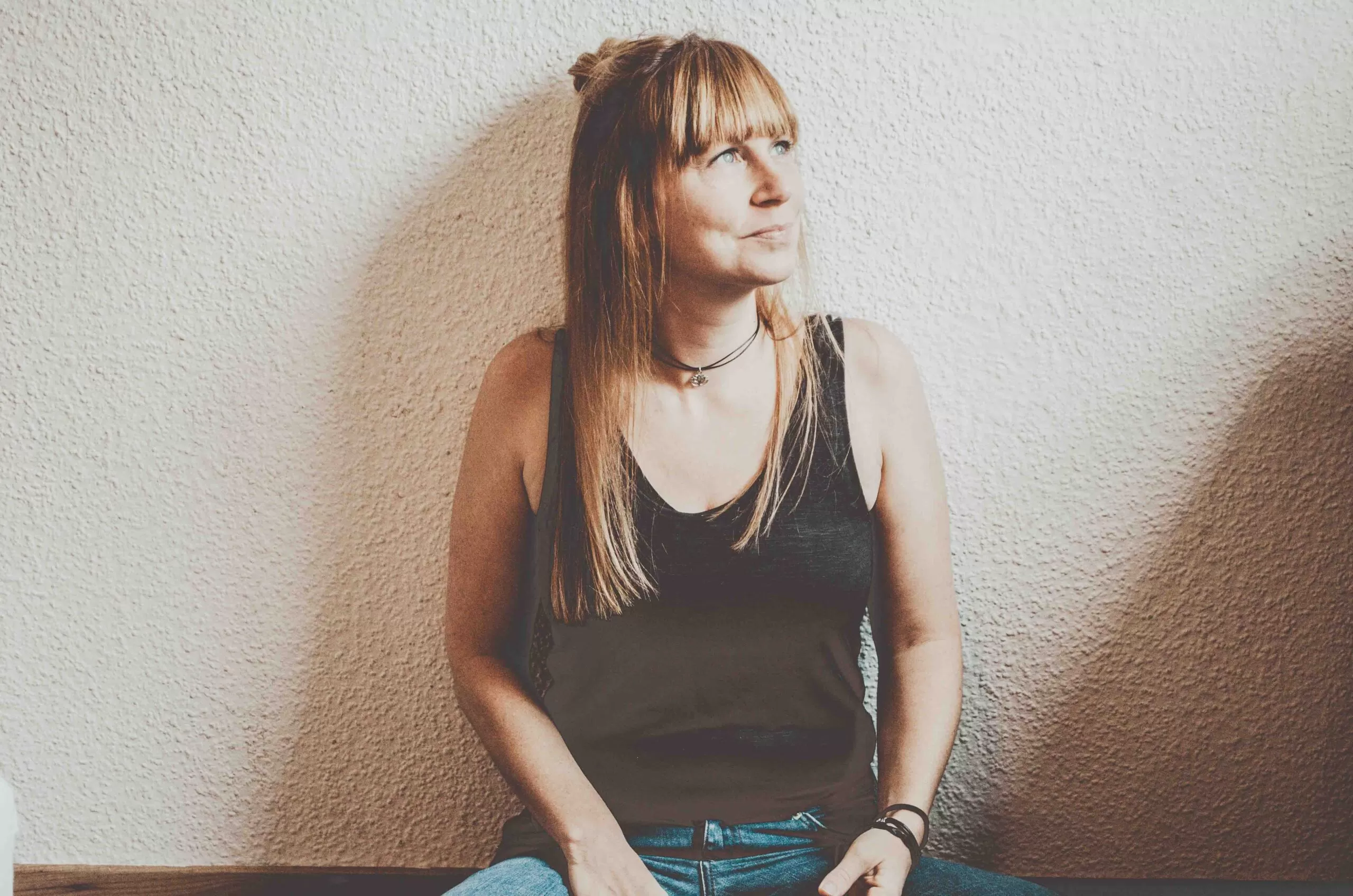
Hi! I am Annelies and this is Travelers & Dreamers, a blog about conscious travel which means traveling in a more mindful way, with a positive impact on the world and yourself!
On this website, I cover different topics like slow travel, plant-based food guides, responsible travel, sustainable packing, eco-travel, and more!
Latest Posts

Santa Rita, Salento: All You Need to Know
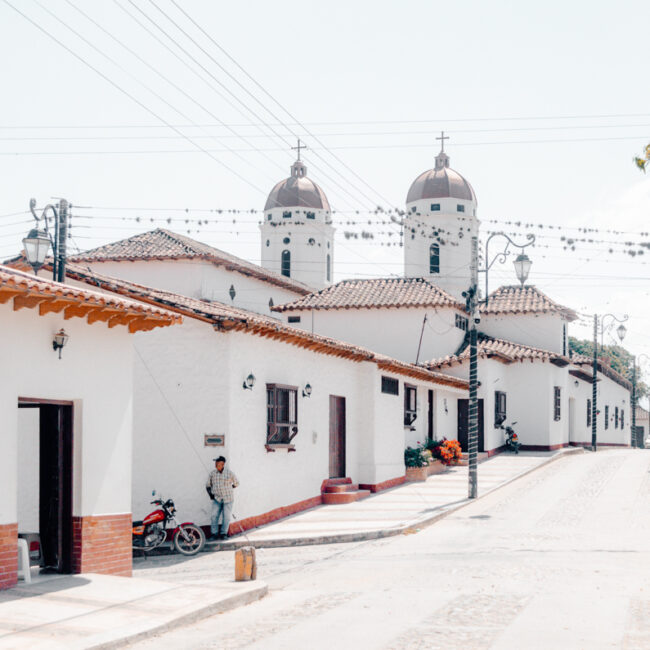
La Playa de Belen, Colombia: An Easy Travel guide!
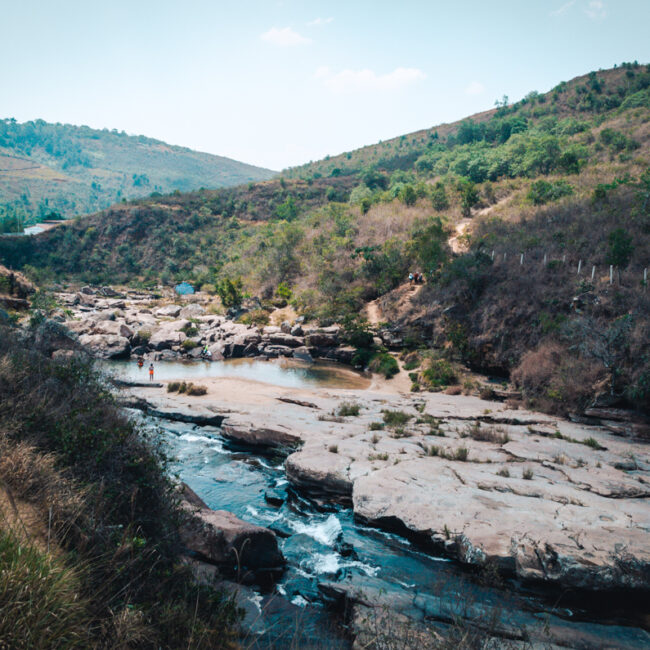
How to Visit the Pescaderito in Curiti (Near San Gil)
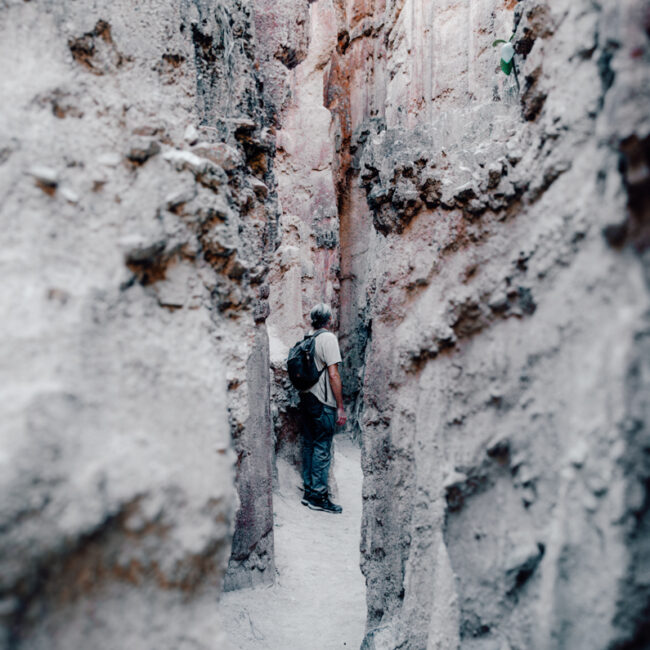
Los Estoraques Unique Natural Area: An Easy Travel Guide
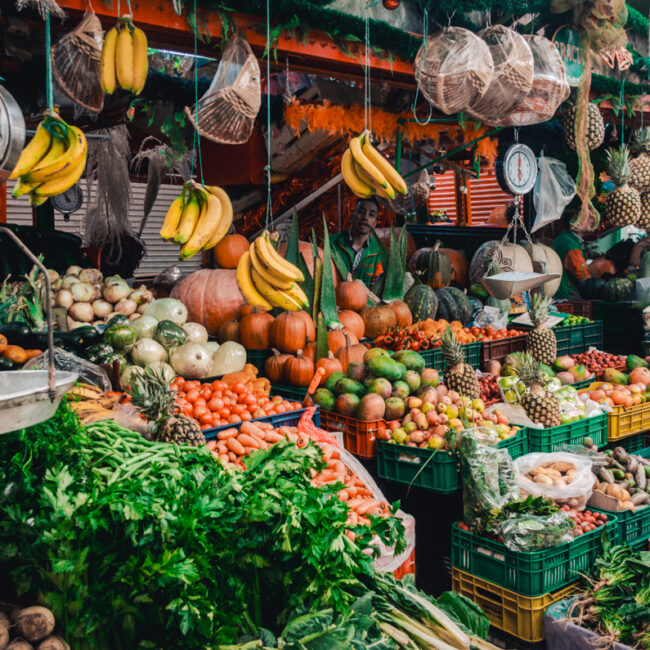
An Easy Guide to Paloquemao Fruit Market in Bogota
Do you want to receive my latest finds on conscious and sustainable travel directly to your inbox? Subscribe here!
© COPYRIGHT TRAVELERS&DREAMERS, 2023.